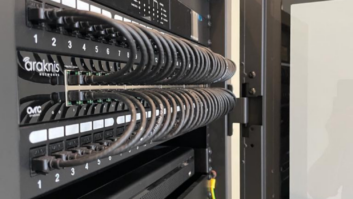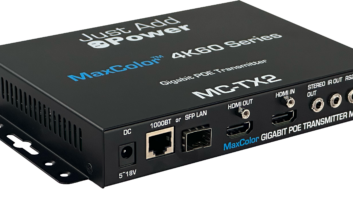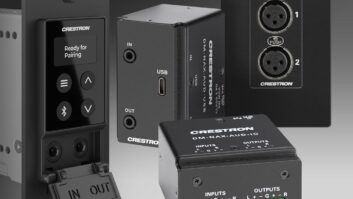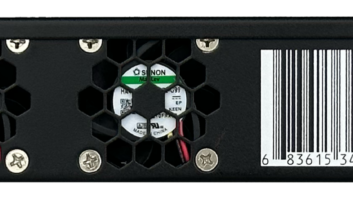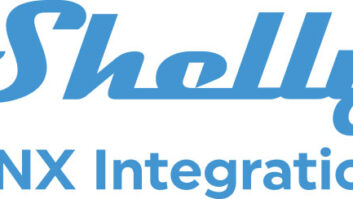In the Fall of 1991, Scott Grau and Arthur Henley plugged a common analog phone into a homemade network interface card and began test sequence #348. The hand-crafted PCB was a morass of wires and globular solder points that looked more like a Borg implant than a NIC, but it was nothing short of revolutionary. Combining digital signal processors with an ethernet 10BaseT chipset, the device created a gateway between the world of telephone communications and a data network. Although there was no coffee spilled nor calls for help, a simple “Can you hear me now?” summoned the first telephone call over a packet data network. Uncle Alexander would have been proud.
And so began the race for voice and data convergence. Voice over Internet Protocol (VoIP) was born a few years later, and college students began phoning home with their PCs while telecom inventors built quad T1 gateways to link together PBXs across a corporate WAN. But why? Traditional telephony had been serving carriers and corporate infrastructure well for 100 years. The answers then are some of the same reasons custom installers are looking to VoIP today.
First, life is much easier with a single infrastructure for voice and data. Every drop is a Cat-5e and RJ-45 back to an ethernet switch. If an extension needs to be moved, just pick up the phone from one location and plug it into another. The extension travels with the phone instead of being tied to a physical copper pair. Long distance runs are easier too. A simple fiber port can be used to connect an outbuilding up to a mile away with no more worries about lightening strikes that would damage a conventional PBX extension.
Wireless VoIP is easier too. “Wi-Fi” 802.11g phones use the same network that you set up for computing, so you dont have to worry about 2.4GHz cordless phones interfering with your wireless LAN. You also avoid the expense of standing up two separate sets of access points. In addition, turning on 128-bit WEP gives you a level of security that no cordless phone can rival.
Many VoIP phones also support Power-Over-Ethernet to eliminate wall clutter, and have an integrated ethernet switch for connecting a computer in case theres a shortage of wall jacks. POE is a great way to create a backup power environment for all of your phones. Just plug the POE switch into a UPS, and all of the phones in the house will stay live even when the lights are out (as long as your phones use the same voltage as the ethernet switch. No standards exist for this, and manufacturers use different voltages ranging from 12v to 48v.)
Customers are often accustomed to the unified dial plans of the corporate world and want the same for their multiple residences. PBXs that support VoIP can be tied together, making it simple for calls originating to one house to be transferred to another. Imagine creating a hunt group of extensions that includes phones at all six of your customers homes. Or having the front gate call from your main house ring the phones at your beach house when youre there for the weekend.
Probably the most compelling area of integration for custom Installers is the interplay between IP telephone and home automation systems. Control system manufacturers have long had telephony system interfaces to activate scenes by way of an incoming DTMF, but the phone system has largely been isolated. Now the tables are turning as IP telephone system manufacturers are introducing IP and RS-232 application programming interfaces (APIs). These APIs make it possible to automatically activate changes to call handling as part of a scene created by the home automation controller. So now you can have the music lower 10db when the phone rings, or place the master bedroom phone on “do not disturb” when the customer turns in for the night. This level of integration adds significant value over the typical plug-and-dial PBX setup for which installers see little profitability.
It is important, however, for custom installers to understand the difference between using VoIP on different segments of the system. VoIP can be used on the LAN only, with traditional telephone trunks to provide PSTN communications. And it can be used on the WAN to connect multiple facilities together for a single dial plan or be used to connect the PBX to a VoIP service provider for PSTN communications. A VoIP system can use any combination of the above, so it is important that an installer be able to explain the differences of each to his customer and recommend a solution that fits his specific needs.
Custom installers should be aware of significant differences that exist between IP telephony products as manufacturers migrate their legacy systems to the world of VoIP. Many traditional PBX manufacturers have created interface adapter boards that convert ports on their existing PBX architecture to VoIP. Commonly referred to as an “IP-Enabled PBX,” this approach provides an easy migration path for dealers who know the legacy system like the back of their hand, and simply want to add VoIP capability. The down side is that trunk and extension communications are still limited by physical ports on the PBX. Adding a phone will require the addition of anther extension port and a VoIP gateway port if all ports are presently in use.
IP PBXs differ in that all communications flow freely across the systems backplane without the restriction of physical ports. This approach makes it possible to have an unlimited number of calls pass simultaneously from the VoIP carrier to the PBX, over to the auto attendant, and on to VoIP phones without a caller ever getting a busy signal. Homes and small business with widely shifting use patterns love this. However, the number of calls that the system can handle simultaneously is limited by the processing power of the PBX.
The digital encoding of voice from analog to IP, the compression of voice signals and the conversion from one VoIP protocol to another all use processing power. Some systems employ “voice resources” for these functions and require the system to be configured with as many voice resources as necessary to accomplish the desired use pattern. Other IP PBXs centralize voice processing in the CPU, and then place limits on the systems use. Be sure to discuss this aspect of any product with a technician from the manufacturer before you buy.
Several standards presently exist for IP communications. H323 is the oldest of these standards, and is often used for gateways between PBX systems. This protocol is rather bulking, being designed to support a broad array of real-time communications, and also does not support packet re-sequencing. Hence it tends to be favored for use on managed networks. Cisco uses a proprietary subset of H323 called SCCP (commonly referred to as “Skinny”).
Session Initiation Protocol (SIP) is favored by VoIP service providers because of its ability to cross network segments without burdening medial devices. Once the session has been initiated, the voice switch managing the transaction steps out of the way and the two phones communicated directly. SIP is also supported by a broad array of phone devices; however, it does not traverse NAT firewalls, making it problematic for business VoIP users.
IAX is a protocol created in the open-source PBX development community. It is an exceptional solution for lean, reliable communications that must traverse firewalls; however, there are no phones on the market that yet support it.
So before adopting a technology to offer customers, its important for dealers to know what protocols will best suit each segment of the specific application. Most custom installers will want to use SIP on the local area network for phone flexibility, H323 for connection outside to VoIP service providers, and IAX for connecting secondary residences over the Internet. They should make sure that their IP PBX manufacturer can support the protocols you need for your specific application.
Another consideration of protocol support is interoperability between phones and the PBX. Just because a PBX and a phone both support SIP, does not mean that full functionality of the phone with all its features will be available. Only plan on using handsets that are specifically supported by the PBX manufacturer.
In configuring a VoIP phone system, you will also need to establish what compression algorithm you plan to use, and determine if all the pieces support it. As with audio storage compression, quality is compromised for bandwidth. Most customers find that GSM compression operating at 13kbps provides great voice quality relative to the dramatic bandwidth reduction from 64k PCM.
VoIP in the early years become almost synonymous with poor voice quality. However, improvements in the hardware and protocols have now made it comparable to even the finest digital TDM systems. That being said, there is still no VoIP protocol that supports QOS, so a good VoIP phone install must pay close attention to network topology. In the local area, installers should utilize a Layer 3 ethernet switch to put the phone system and computer networks on separate VLANs. Wide area connections over the Internet can be improved through the use of a SIP-prioritizing router, which improves voice quality on the most critical Internet segmentthe last mile. The only WAN connection that will provide perfect voice is a digital tie-line, which is beyond what most customers will pay; however, many customers will be pleased with the voice quality they get from a simple broadband connection.
Another alternative commonly used is redundant broadband. Companies often buy DSL or cable-modem service from two separate providers and then marry the connections using a load balancing router. This provides both increased bandwidth and redundancy, which can dramatically reduce service calls.
In the coming years more VoIP CLECs will offer VoIP service with interoperability to specific phone switches. The great benefit of this architecture is that customers can have as many simultaneous calls as their broadband service can support without any monthly charge for trunks. This results in big savings in both hardware and monthly service fees. We should also see more CLECs offer VoIP Centrex service which will cut into small business phone system sales, but will have little effect on high-end residential.
Most exciting is the advent of Video-over-IP phones that are now making their debut. Some even include XML programmable touch panels that are perfect for the CEDIA market. Expect this summer to see PBX manufacturers that have programmed touch-panel video phones to send commands to a home automation control system.
John T. Cox is president and CEO of Xperinet Inc. in Annapolis, Maryland.

